The magic of Marfa – the making of an art mecca
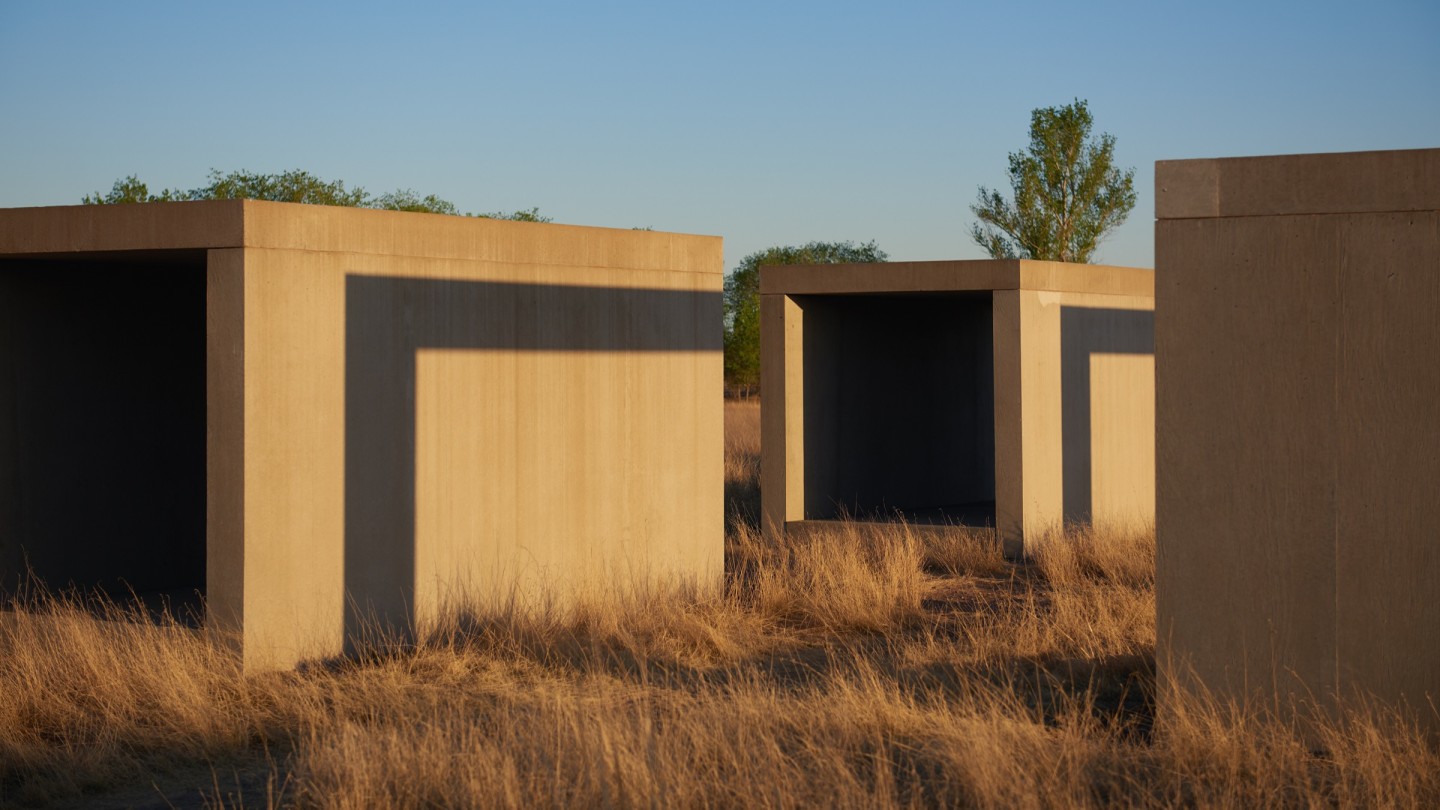
Roula Khalaf, Editor of the FT, selects her favourite stories in this weekly newsletter.
Travel and travel planning are being disrupted by the worldwide spread of the coronavirus. For the latest updates, read the FT’s coverage of the outbreak
This is shaping up to be a banner year for the late American artist Donald Judd. His first US retrospective in over three decades opens this weekend at MoMA in New York. Alongside it is Prints: 1992, an exhibition at the Judd Foundation in SoHo featuring 20 of the artist’s late-period woodcut prints on paper, curated by his son Flavin. A book, Donald Judd Spaces, offering a glimpse into his living and working spaces (ranging from the 1870 classic cast-iron SoHo building he bought in 1968 to a 40,000-acre ranch bordering the Rio Grande), will be published in a few days. And basking in this glow is the tiny town of Marfa, Texas, where the godfather of minimalism (though he loathed the term) created one of the world’s largest permanent installations of contemporary art – some of it, significantly, set outside in the scrubby brush.
Judd unwittingly contributed to transforming the town into not only a pilgrimage site for art and architecture aficionados, but also, post his death in 1994, into a bucket-list destination. Those who come today may not even have heard of Judd, but have connected with the town’s growing cultural significance via Beyoncé on Instagram, or because they want to pop by that much-photographed Prada “store”. Judd’s Chinati Foundation estimates it’ll have 50,000 visitors this year, up from 12,500 just seven years ago, while Marfa Invitational, an international art fair that debuted last year, promises to be an annual event.
But how did Marfa transform into a destination that appeals to such a wide audience and a moniker found on luxury goods including a perfume by Memo Paris and stiletto boots by Tamara Mellon? Judd first travelled here in 1971. “I wanted to be in the southwest of the United States and be near Mexico, and also to have room for large permanent installations of my work as well as room to install work by other artists,” he noted in his book Donald Judd Writings. Essentially, he was looking for space.
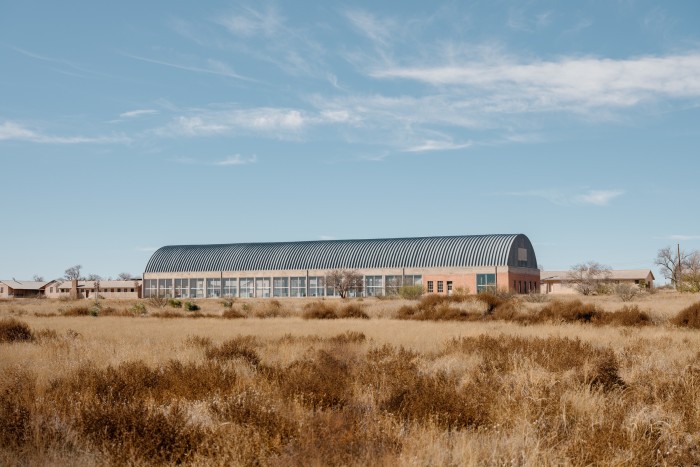
While the artist didn’t refer to his three-dimensional works as sculpture, many consider him to be the person who challenged the idea of what a sculpture is – his hollow aluminium “boxes”, along with such works as stacks of rectangular boxes in different materials, often incorporating colour, are now held in the permanent collections of over 60 museums worldwide, including Tate Modern (which staged the last major Judd retrospective in 2004). “He and several others of his generation made works that, when they first appeared, wouldn’t have even seemed like works of art,” acknowledges Ann Temkin, chief curator of painting and sculpture at MoMA. “Fifty years later, we see things that look this way and without a second thought acknowledge that it is a sculptural form.”
Last year, Paris gallery Thaddaeus Ropac sold stack pieces for between $6.5m and $7m, and estimates the artist’s Corten-steel pieces, created between 1985 and 1992, now fetch about $3m. Last November, a stack of 10 brass and green Plexiglas boxes (executed in 1993) came up for auction at Christie’s New York. Described as “majestic” by Ropac, and “monumental” by David Zwirner, who has presented solo exhibitions by Donald Judd in New York and London, it fetched $6,631,000 – a sum Zwirner felt “should have been more”. Meanwhile, Judd’s furniture – tables, chairs, stools, benches, beds, desks and shelves, originally designed for his own homes – are still in production, with prices including $1,900 for a stool and $21,150 for the Serving Table.
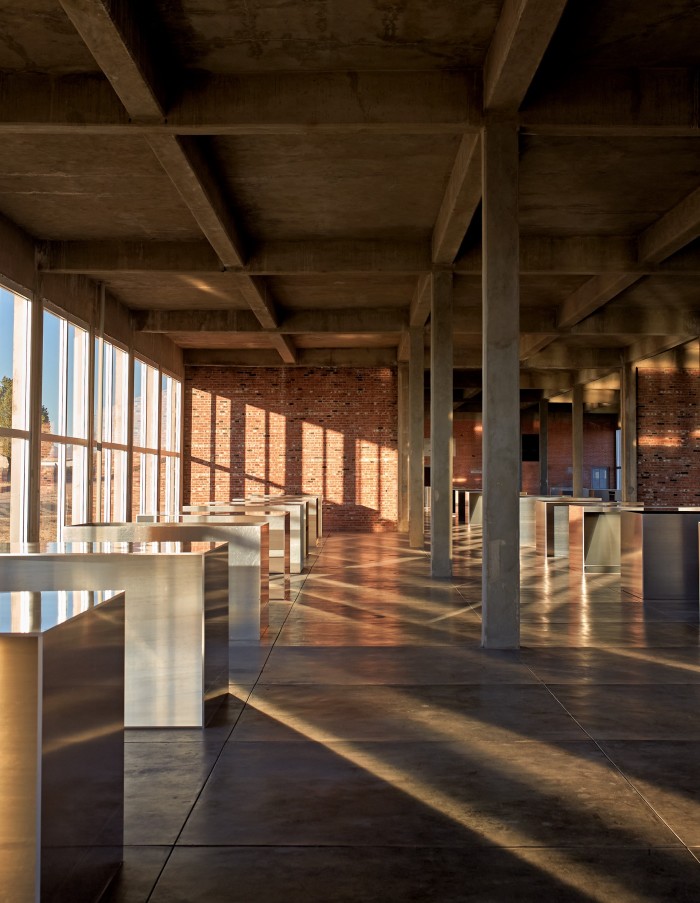
But arguably it’s in Marfa where Judd’s pieces really come to life. Monumental outdoor concrete sculptures sit in stark glory in the high-desert landscapes. I first visited in 2005, flying into El Paso and driving three hours, much of it on a two-lane “highway” through expansive ranchlands, under that big Texas sky, with the occasional tumbleweed skipping across the road, just like in the movies. I stayed at the Thunderbird, the hiply renovated roadside motel, and slept poorly on a beautiful platform bed – not because of the design, but rather the mile-long freight trains that passed by throughout the night.
I experienced everything Judd: from the Chinati Foundation, the museum he created on the site of a former army base, with installations of his pieces, as well as works by Dan Flavin, Claes Oldenburg, John Chamberlain and others, to the Judd Foundation buildings that house the artist’s office, studio and in-town living quarters. I perused vintage books while sipping a coffee at lone café The Brown Recluse, followed the advice of a Chinati intern from Germany (who dressed head to toe in cowboy gear) and had breakfast at Ramona Tejada’s home (now known as Marfa Burrito), where she served up homemade breakfast burritos to ranchers, Border Patrol officers, locals and tourists seated at mismatched tables in her living room.
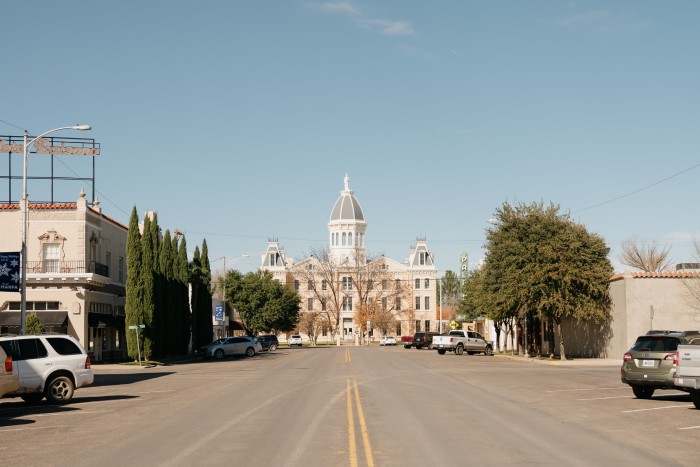
I wandered along Highland, the main street, and into the historic Hotel Paisano, which was the headquarters for the filming of the classic epic movie Giant, starring Elizabeth Taylor, James Dean and Rock Hudson. I tried to see the famous Marfa Lights, which Flavin Judd later semi-ruined for me by claiming they are flickering headlights from a highway, not an otherworldly source. Nonetheless, I was smitten with it all. The fact that I could drive for miles and see not one single billboard ad. That I could walk down a “main” street with no glass towers or huge buildings. That insane Texas sky. Just the fact that there were no other people. Only incredible art – and some cows, antelopes and the occasional snake.
Quite fortuitously, on that same trip, I met a real-estate agent named Valda Livingston, who wore ’80s glasses unironically, raised Cadillac cows and would later email me about some five-acre plots of land that a rancher had subdivided in an area called Antelope Hills. Mary Farley, a forensic therapist with a penchant for birds, ex-wife of artist Matthew Barney and now owner of Marfa Vista Real Estate, took a look and blessed the purchase. A month later I was the proud owner of a piece of land – the size of which Livingston would later joke was 726 times the size of my New York apartment – bought sight unseen.
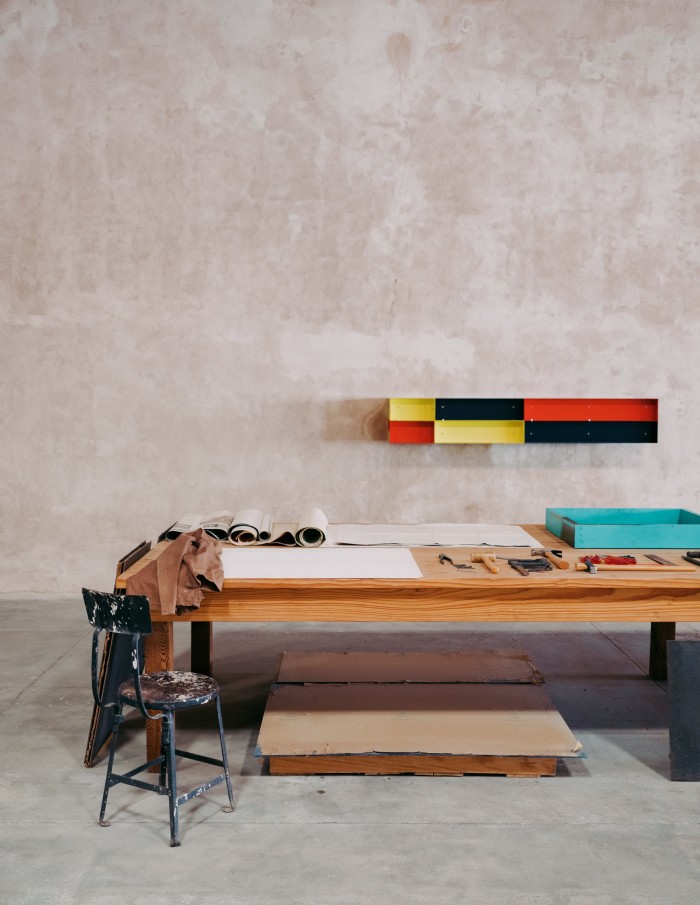
In the 15 years since I first drove into this town of just under 1,800 people with one flashing stoplight, a lot has changed. Back then, it was still a challenge to find what many would consider basic necessities, like lunch. Today, you can not only get what you need, but many things you don’t – provided said establishments are open, which is never guaranteed. The robust made-in-Marfa retail scene includes saddle-leather minimalist chic furniture at Garza Marfa (I swear someday I will own that daybed), boots and leather goods at Cobra Rock, clothing and jewellery at Mano Mercantile and Sister Gaiya, quirky cool objets d’art at Wrong Marfa and three-legged stools made by a group of young girls operating as Lumber Club Marfa (although there’s a several-months-long waiting list for those).
The Get Go, a gourmet grocer, now ensures I can get cold-brew coffee, dark chocolate and a decent bottle of wine. Its canvas tote bag is the perfect insider Marfa souvenir (if you know, you know). The town finally has a proper barbecue spot, Convenience West, praised as “a work of art” by (really) the barbecue editor of Texas Monthly magazine. The Brown Recluse coffee shop has been replaced by Do Your Thing, Frama (located in a laundromat) and others. And El Cosmico, where you can stay in a trailer, tent or yurt, has one of the best hotel gift shops I’ve ever seen. The Marfa Municipal Airport recently lengthened a runway to accommodate private jets.
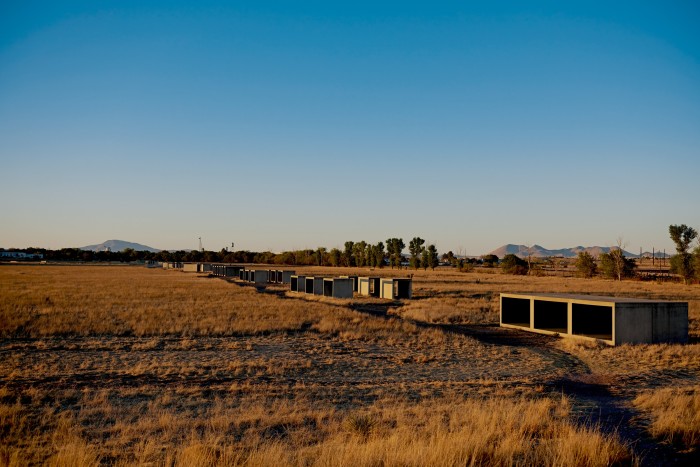
“Marfa is now a brand,” confirms Tim Crowley, a lawyer from Houston who moved here in 1997, co-founded the Crowley Theater and Marfa Book Company, and opened the closest thing this town has to a boutique hotel – the Hotel Saint George – in 2016. “A lot of people who visit Marfa don’t really know why they’re coming, but they know it is something they should check out.”
“We turned up the volume on Marfa, but it wasn’t immediate,” admitted Fairfax Dorn, who, with Virginia Lebermann, founded Ballroom Marfa in 2003. This gallery and cultural arts space champions future star artists and musicians (before-they-were-famous Rashid Johnson and Bon Iver among their number), and put Marfa on the map for a different, often younger person. She’s being modest. The Texas natives put together a very cool board of artists, well-connected locals, ranchers and cultural philanthropists. As a result, when artists Elmgreen & Dragset were trying to do Prada Nevada, and Nevada wasn’t working out as a location, Ballroom Marfa stepped into the breach – and helped create the Insta-famous Prada Marfa, a “permanent sculpture” that looks like a Prada boutique circa 2005. It’s not actually in Marfa, but 60km away in Valentine. But who cares? The installation is a must-selfie stop for anyone visiting the area.
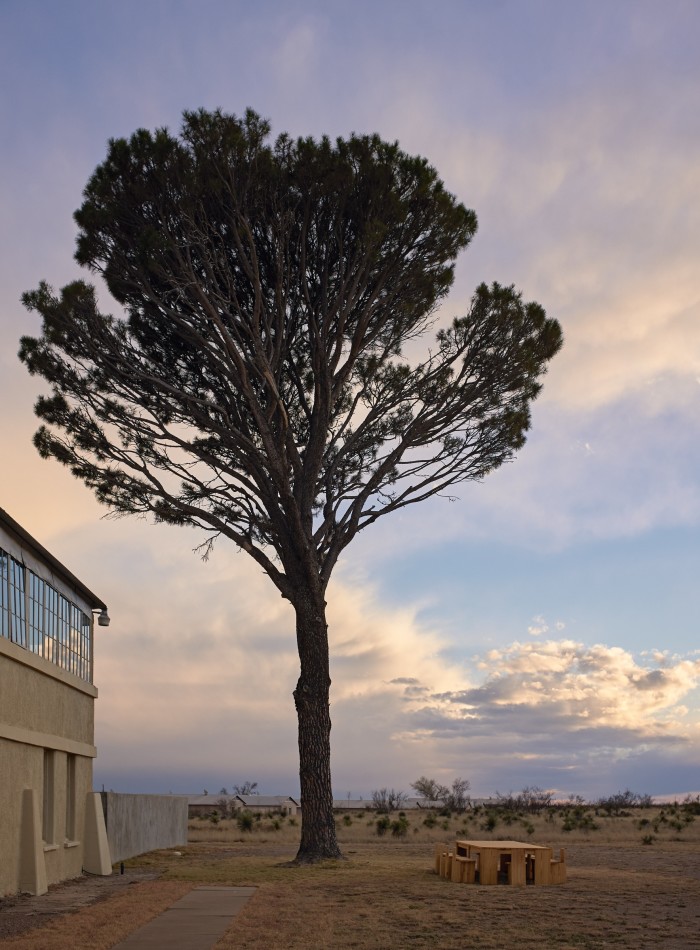
The fashion world has moved in too. Ballroom Marfa’s annual fundraisers, held in New York, are attended by Naomi Campbell, Moda Operandi co-founder Lauren Santo Domingo, and Sofia Coppola, a childhood friend of Judd’s daughter Rainer. Having Jay-Z repeatedly photographed sporting a Ballroom Marfa trucker hat doesn’t hurt either. Flavin Judd once said, “In some ways, my father saved Marfa from becoming a dusty, abandoned Border Patrol stop. But in other ways it was Fairfax and Virginia who did it. They put their faith in the future of Marfa.”
Mapping Marfa
Marfa Visitor Center, 302 S Highland Ave (visitmarfa.com).
Gateway cities to Marfa: El Paso (300km northwest; elpasointernationalairport.com); Midland (300km northeast; flymaf.com).
JUDD
Chinati Foundation, 1 Cavalry Row (chinati.org). Judd Foundation, 104 S Highland Ave (juddfoundation.org); guided tours from $25.
CULTURE
Ballroom Marfa, 108 E San Antonio St (ballroommarfa.org). Crowley Theater, 98 S Austin St.
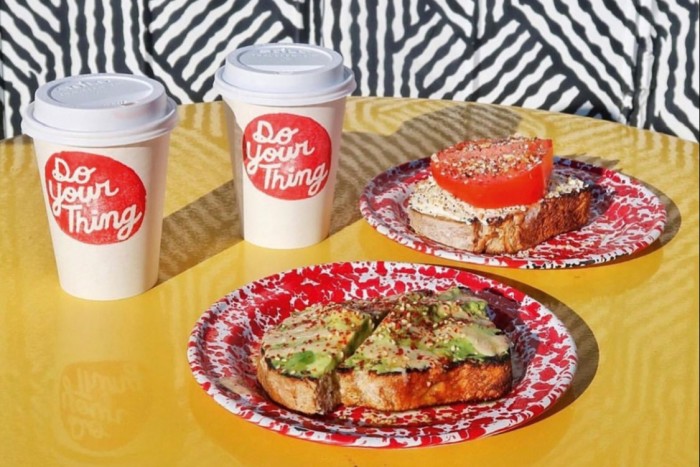
EATING
The Capri, 603 W San Antonio St. Cochineal, 107 W San Antonio St (cochinealmarfa.com). Convenience West, 1411 W San Antonio St (conveniencewest.com). Do Your Thing, 201 E Dallas St (doyourthing.us). Marfa Burrito, 515 S Highland Ave. Stellina 103 Highland St (stellinamarfa.com).
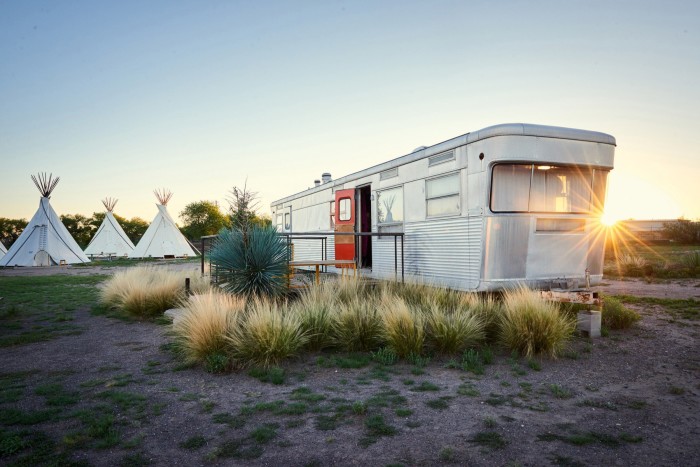
STAY
El Cosmico, 802 S Highland Ave (elcosmico.com), from $85. Hotel Paisano, 207 Highland St (hotelpaisano.com), from $139. Hotel Saint George, 105 S Highland Ave (marfasaintgeorge.com), from $159. Thunderbird, 601 W San Antonio St (thunderbirdmarfa.com), from $136.
They’re not the only ones. Over the years there’s been a steady ebb and flow of newcomers, ensuring that every time I visit there are surprises. Old favourites, temporarily shuttered or just plain gone, have been replaced by new businesses and faces, co-mingling with notable locals like the artist Christopher Wool or the late Boyd Elder, whose art graced two Eagles album covers and who was, for years, the caretaker of Prada Marfa. When I first met Elder, he was driving a rusted baby-blue pick-up truck, with a shotgun in the passenger seat to ward against “critters”. He claimed the sunglasses he wore were a gift from Jack Nicholson, who he hung out with in LA back in the day. For years I’d rate my Marfa trips based on whether I’d had an Elder sighting. I’d often spot him at The Capri, arguably the best restaurant in town, helmed by Rocky Barnette, who spent years at a Michelin-starred establishment on the East Coast and is co-author of Cooking in Marfa (published in a month’s time), for which another Michelin-starred chef, Daniel Humm, has written the foreword.
Humm, too, has been seduced. “I expected Marfa to be more of a touristy spot than it was,” he says of his discovery of the town, while visiting artist friends. “I found it to be so pure and authentic… I really felt the magic of the town and the community.”
This magic – of the remote location, the art sensibility, the sky, the community quirkiness and the oh-so-slow pace – creates a cultural alchemy. Crowley describes it as “the most important small town in America, from a cultural perspective”. The Coen Brothers filmed No Country for Old Men here. Sissy Spacek has graced its local stage. The Lannan Foundation residency programme has brought more than 350 novelists, poets, playwrights and activists here over the past 20 years – including Pulitzer Prize winners Colson Whitehead, Forrest Gander and Tyehimba Jess. Its music festivals, including the Trans-Pecos and Marfa Myths, have attracted heavy-hitters like Robert Plant, Sonic Youth and Lyle Lovett. And in 2017, Solange Knowles, native Texan and sister of Beyoncé, staged a now legendary performance piece, Scales, outdoors amid Judd’s Untitled concrete blocks.
Marfa’s power as a creative magnet is not going to wane any time soon, as evidenced by the tech titans, world-class gallery owners and at least one country-music star who’ve seriously eyed or bought property recently. The enclave’s envious combination of epic landscape with art, retail and culinary offerings in a very remote setting ticks all the boxes. A lot of them Judd’s. Dorn describes it best: “The quality of design and art created the destination, and it was all influenced by Judd. It shows the power of art, and what it can do, when done in the right way.”
Comments